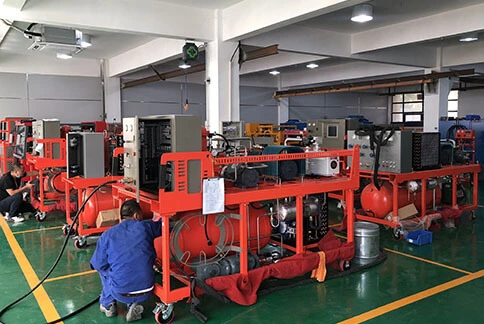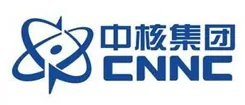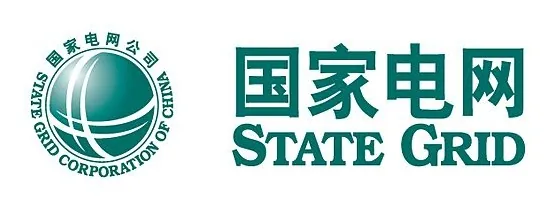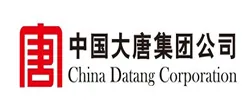3.3.1 Take SF6Relations’s on-site SF6 recovery and regeneration service.
When a customer requests SF6 regeneration service, SF6Relations will dispatch a mobile SF6 gas recovery processing station (i.e., a vehicle-mounted SF6 recovery and regeneration device equipped with SF6 dew point meter, chromatograph, SF6 decomposition product analyzer,SF6 gas leak detector, vacuum pump, and other related detection instruments and auxiliary devices), and arrange experienced technicians with on-site work experience to go to the customer’s designated location. SF6Relations can respond promptly and arrive quickly, and the corresponding detection instruments are carried with the vehicle, which can basically meet the on-site detection needs. Customers can also perform self-testing or send samples to a third party. In terms of gas treatment, We can recover and process the SF6 gas to meet the standards of GB12022 & IEC 60480 for new SF6 gas in order to meet the on-site recycling needs.
3.3.2 Use of New Gas Refilling Mode
When using the new gas refilling mode, the following preparations need to be made for materials and equipment:
(1) New gas procurement: If there is sufficient stock of new SF6 gas, there is no need to consider the issue of new gas procurement. However, if the stock of new SF6 gas is insufficient, the issue of new gas procurement needs to be considered. A certain period is required from project approval to supplier selection to new gas supply. If the procurement quantity is small, it is impossible to enjoy bulk procurement’s price and service.
(2) Gas recovery: SF6 gas, as a prohibited greenhouse gas, must be recovered using an SF6 gas recovery device before conducting maintenance on high-voltage switchgear equipment.
(3) Vacuum pumping of gas chambers: After maintenance of the switch, a vacuum pumping operation must be carried out on the gas chamber to ensure its cleanliness. A vacuum pump or Roots pump group is needed for this operation.
(4) Refilling of waste SF6 gas: After the SF6 gas has been recovered, the waste SF6 gas needs to be refilled into SF6 gas cylinders or storage containers for easy transfer of SF6 gas. This step requires using a batch of qualified SF6 gas cylinders or containers for transfer.
(5) SF6 gas refilling stage: The power industry generally uses SF6 gas for refilling. The SF6 gas is mostly stored in 40L SF6 gas cylinders. During the refilling process, the liquid SF6 will vaporize and absorb a large amount of heat, causing a local decrease in temperature inside the gas cylinder. As a result, the SF6 gas inside the cylinder is not easily refilled into the chamber. When using the pressure difference direct refilling method for a 40L SF6 gas cylinder containing 50kg of SF6 gas, only 15-20kg of SF6 gas will usually be left in the cylinder. Improving the utilization rate of sulfur hexafluoride. Special SF6 gas cylinders with heating and refilling devices are required, or the SF6 gas can be warmed up by the environment before refilling (which is a slow process. If the construction schedule is tight and there is no SF6 gas cylinder heating and refilling device, a large amount of new SF6 gas can be used for refilling).
(6) Gas detection stage: The new SF6 gas used on-site is generally inspected before refilling. However, according to relevant standards such as DL596 or GB8905, the SF6 gas refilled into high voltage switches must undergo gas quality testing after major maintenance to ensure that the switch will not fail due to unqualified SF6 gas. This stage requires a series of instruments for SF6 gas and leak detection.
(7) Equipment operator selection stage: Professional personnel must operate the SF6 gas recycling and detection stages. Improper handling in each stage may cause environmental pollution and personnel safety risks, hindering project progress. However, there is currently a shortage of professional operators for SF6 gas treatment in many units.
(8) SF6 gas recycling equipment and auxiliary equipment transportation and loading and unloading stage: This stage requires vehicles to transport the equipment to the designated location. Lifting devices are also required for equipment lifting and disassembly.
(9) Consideration of equipment source: In handling sulfur hexafluoride gas, specialized equipment is necessary for corresponding treatment. If all the necessary equipment is available, then there is no need to consider the source of the equipment. Only the reliability of the equipment needs to be considered. However, if some equipment is lacking, then the source of the equipment needs to be considered. If it is necessary to purchase the equipment, a longer supply cycle is required. If borrowing equipment from others, the reliability of the equipment and the normal use and usage of the equipment owner need to be considered.
(10) Transportation and loading and unloading of gas cylinders: As a 2.2 class hazardous chemical, transportation of new sulfur hexafluoride gas requires selecting appropriate hazardous chemical vehicles, which generally have a higher transportation unit cost than regular transportation. Higher-level hazardous chemical transportation vehicles are sometimes required for transporting waste sulfur hexafluoride gas due to different impurities it may contain. If regular vehicles are used, they may face high penalties or safety risks. At the same time, loading and unloading personnel are required to load or unload sulfur hexafluoride gas cylinders.
(11) Storage of waste sulfur hexafluoride gas: This step requires storing gas cylinders or containers containing waste sulfur hexafluoride gas in a place that meets relevant standard requirements. According to relevant standard requirements, the sulfur hexafluoride waste gas stored in gas cylinders or containers must be replaced or inspected within a certain period to avoid gas leakage or more serious accidents. Suppose the waste sulfur hexafluoride gas contains a more reactive substance or stronger acidity. In that case, it is easy to cause corrosion to the storage containers, which increases the risk of storage.
(12) Evaluation by environmental protection agencies or internal evaluation by companies: According to current policies and standard requirements, corresponding evaluation policies are made for the recycling rate of sulfur hexafluoride gas. If the sulfur hexafluoride gas cannot achieve the “recycling-purification-reuse” closed-loop or the utilization rate does not meet the evaluation requirements, it directly affects the final evaluation result.






